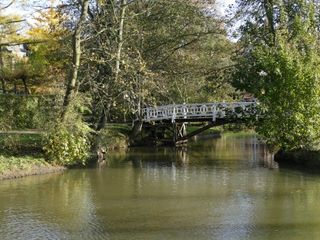Why you can trust TechRadar
My first impressions of the V-Lux were very good. It's clearly capable of capturing high quality images with pleasant colours and a decent level of detail. Raw files in particular impress with their dynamic range and the ability to draw back detail from areas that initially look burned out.
However, the multi-purpose metering system throws up a few surprises. On some occasions it delivers perfectly exposed results, but on others it delivers very bright images. In some situations during this test the exposure needed to be reduced by 1EV or more, without any logical reason – the AF point was on a midtone and the iDynamic dynamic range optimisation system was switched off.

This was shot using the exposure settings suggested by the camera and looks too bright. Click here for a full resolution version.

Reducing the exposure by 1EV has produced a more pleasing image that better reflects the shooting conditions at the time. Click here for a full resolution version.

Another rather bright image. Click here for a full resolution version.

This time reducing the exposure by 2/3EV has produced a more natural result. Click here for a full resolution version.
Thankfully the electronic viewfinder (EVF) and screen on the back of the camera do a good job of representing the image as it will be captured. So if the image is going to be too bright you will see it before the shot is taken. There's also a histogram view and the Zebra view to assist with this. However, when set to show areas at 100% brightness, the Zebra display is a little over-enthusiastic and tends to indicate more will be white than actually is.
Images produced using the default 'Standard' Photo Style have pleasant colours and a pleasing level of mid-tone contrast. Simultaneously captured raw files look a little flat and lacking in saturation, but are ripe for processing.
It's interesting to compare images from the V-Lux with those from the Panasonic FZ1000. At the lower sensitivity settings the Leica camera produces JPEGs that look a fraction more natural at 100% than those from the Panasonic model. Details are slightly sharper and out of focus areas appear more naturally soft. These differences, which indicate that Leica has chosen the in-camera processing, become less noticeable as sensitivity rises. The Leica camera's processing seems to handle out of focus areas a little better, although there's not much in it. At normal viewing sizes the JPEG images are hard to tell apart.
Panasonic and Leica provide different raw file processing software and this may have an impact upon how the raw files appear direct from the cameras and after processing. However, when raw files from the two cameras are processed in the same way using Adobe Camera Raw, they look the same.
Processing raw files post capture brings the ability to apply as much or as little noise reduction as you like to preserve detail. At normal viewing sizes the V-Lux produces decent looking images throughout its native sensitivity range (ISO 80-12,500). Zoom into 100%, however, and there's a faint granular texture visible in some areas even at low sensitivity settings such as ISO 400. This luminance noise becomes more visible along with chroma noise as sensitivity rises (when all noise reduction is turned off). By ISO 3200 there's some softening apparent in JPEGs, and smudging of details captured in JPEGs captured at ISO 6400.
The V-Lux's automatic white balance (AWB) system performs well in most natural light conditions, producing images that represent the shooting conditions well. Under overcast skies the atmosphere of the weather conditions is visible, but the images don't look excessively cold or blue. Similarly, images taken in full sunlight look warm, but not too yellow.
As with the FZ1000, chromatic aberration is controlled well and distortion isn't a major issue at any point in the lens's focal length range.

The AF system had no trouble getting this bird sharp as long as it stayed on its perch. The detail around the eye is good, but the complex patterns of the feathers on the back of the bird look rather painterly. Click here for a full resolution version.
The V-Lux is capable of focusing quickly even in quite low light and it can keep a moving subject sharp provided that the active AF point is kept over the target. The Tracking AF system, however, is useless with anything other than slow moving subjects. It doesn't respond quickly enough to movements around the frame or to changes in subject distance.

Inside the company making 35-year-old Game Boys look and work like new

AMD teams up with Arm to unveil AI chip family that does preprocessing, inference and postprocessing on one silicon — but you will have to wait more than 12 months to get actual products

The US takes another big step towards banning TikTok – here's what you need to know
